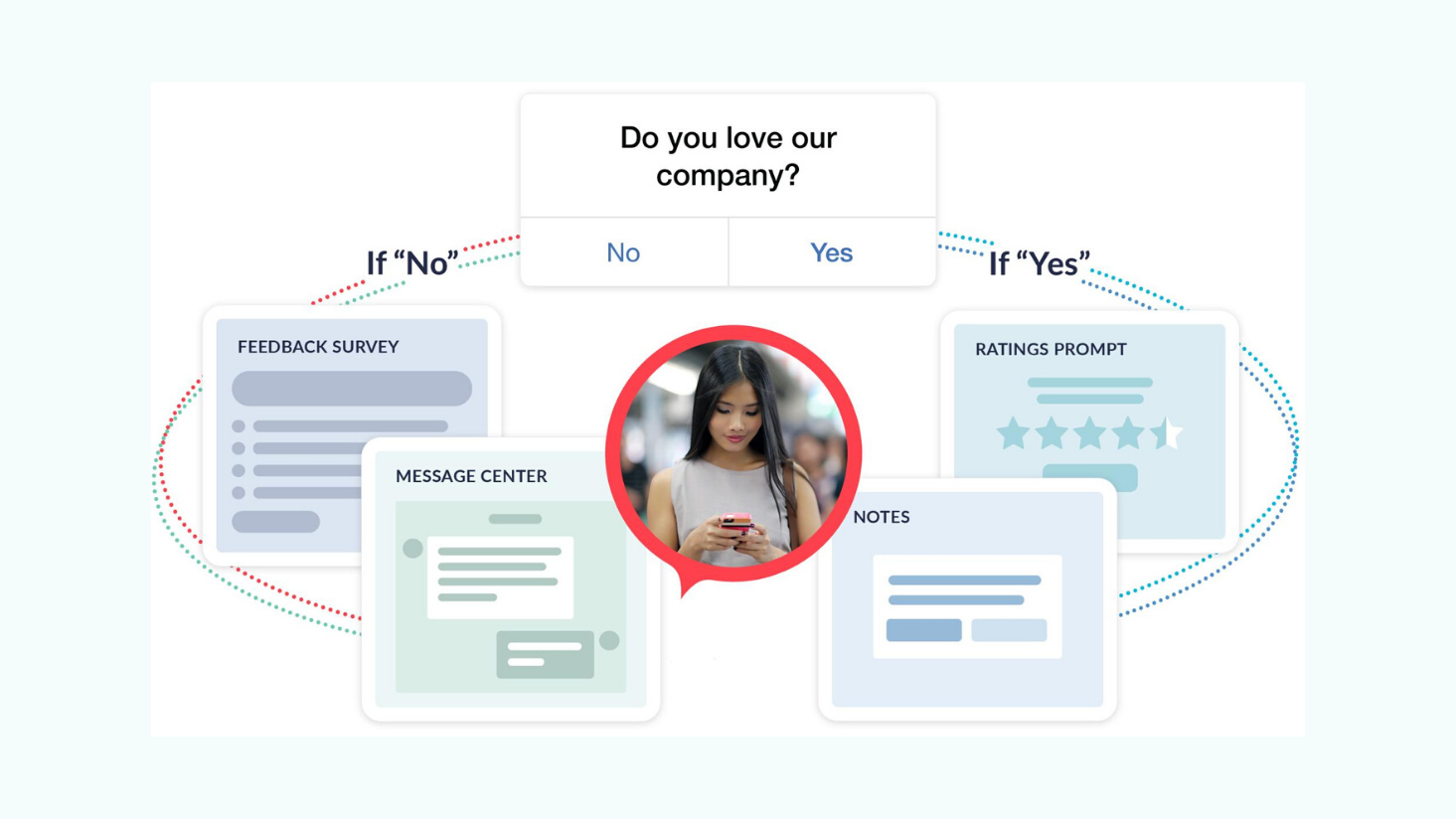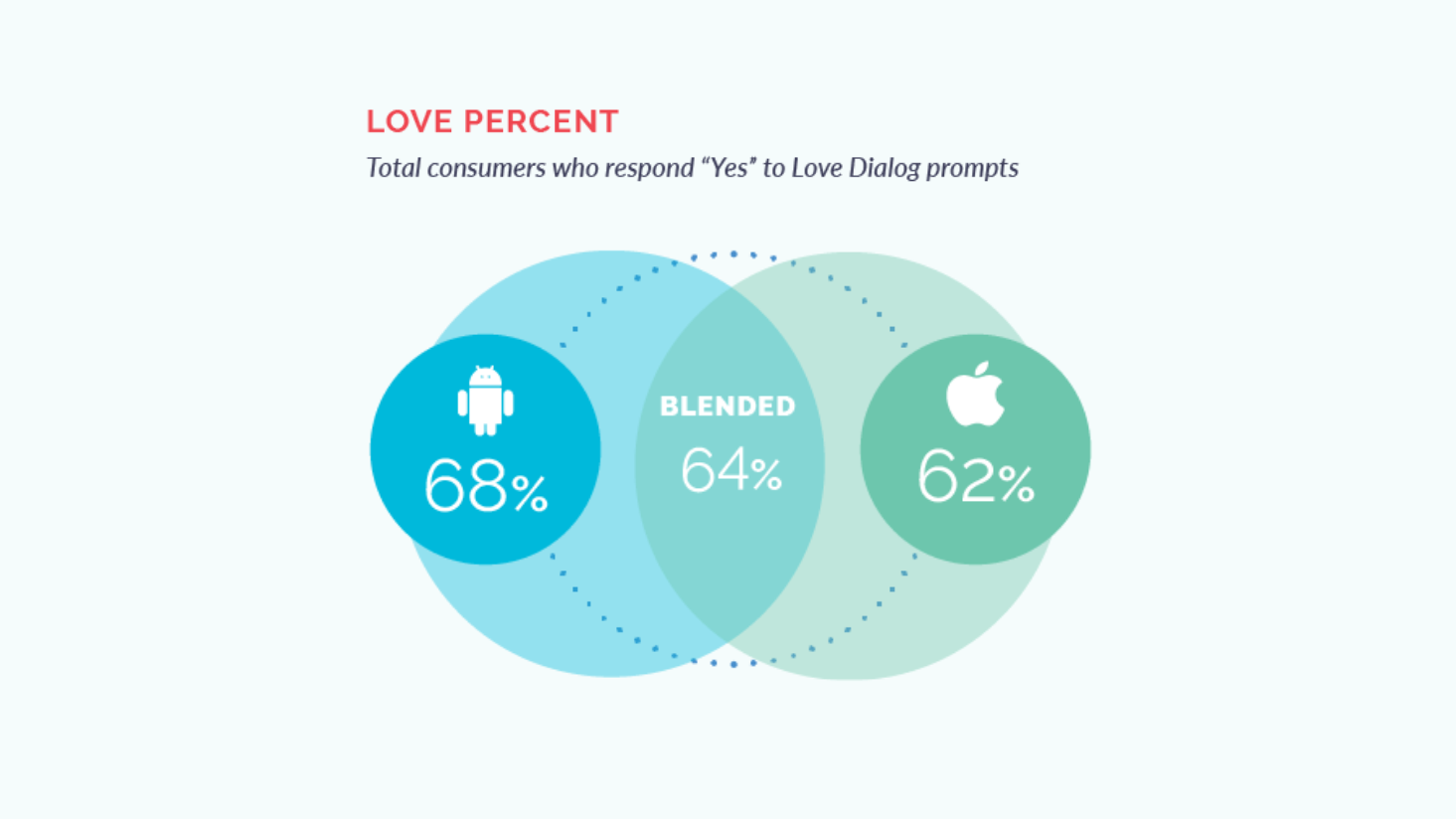3 ways to act on shifts in customer sentiment
Tracking customer sentiment is critical to delivering successful experiences. Learn how Apptentive enables you to monitor shifts in customer sentiment and act on them to improve customer experience.

Today’s marketers and product managers have the power to reveal high lifetime value customers — brand fans— and at-risk consumers by understanding shifts in customer sentiment over time. With this level of unique data from ongoing interactions—both online and onsite—brands can respond faster to revenue opportunities and build loyalty.
Based on data from Apptentive’s 2020 Mobile App Engagement Benchmark Report, our annual survey of over 800 apps and one million consumers, there are various reasons why expressed sentiment shifts. Shifted Fans are typically validation that you’ve improved your customer experience or made a positive change to your in-app experience. Shifted Risks are the opposite and tend to show that you’ve made a negative change to your offerings or customer experience that people aren’t happy with.
In order to measure how many Shifted Fans and Shifted Risks your brand has — and to ultimately move more consumers to the Shifted Fans segment — you have to start with a simple “yes” or “no” question: “Do you love our brand?”

Based on our research, 94% of all consumers who were prompted by this type of Love Dialog responded “Yes” or “No” rather than closing out of the prompt. On iOS, the number was even higher at 97%, compared to 87% of consumers on Android.

The Love Dialog garners such high response rates primarily because of its simplicity. People are willing to answer short, simple questions and share feedback when they’re proactively asked for it at the right mobile moment.
Let’s focus on the people who responded “Yes” to the total “Yes” and “No” Love Dialog responses. In 2019, 64% of consumers prompted responded that “Yes,” they loved the brand. On iOS, 62% of consumers responded “Yes,” and 68% of consumers responded “Yes” on Android.

These quick, positive responses are a great way for brands to take a regular emotional pulse from their consumers, without asking them to leave the app for feedback or take another step away from their intended use of the app.
3 ways to act on customer sentiment
In order to measure sentiment correctly, you must also capture and understand the emotions that drive it. Here are three ways you can act on customer emotion to boost your overall business goals.
- Use shifts in customer sentiment to map your product roadmap
Ultimately, expressed emotion is useful when brands make a connection between the shifted sentiment and what’s changed in their in-app experience or product offerings.For example, if a large number of your loyalty program members suddenly don’t “love” you and shift from Fan to Risk, you can trace back to what changed in your in-app experience to understand—and hopefully correct—the shift. If a repeat Fan suddenly shifts to Risk, that’s the best opportunity your brand has to get ahead of retention drop-off. If the customer is a repeat Risk, you have less of a chance in being successful retaining them. - Leverage feedback to improve customer segments
If a customer is consistent in their expressed sentiment, that also calls for a certain type of action. For example, if the customer is consistently a Fan who has not shifted, your brand’s job is to help turn them into advocates. Again, the converse is true: if the customer is consistently unhappy, your brand needs to take dramatic action to keep them as a customer or you are in danger of losing them to a competitor. - Give customers a voice so you can learn — and act
It’s important to give consumers tools to act if they aren’t happy. If you give them a voice to say, “This part of my experience can be improved and here’s why,” they are more likely to stick around. If you’re not proactively asking for feedback, you’re leaving an opportunity on the table to keep your finger on the pulse of your app customers, improve customer happiness, and increase your bottom line. The more customers you receive feedback from, the more cohesive and customer-centric your product can become.
There are a few gotchas to consider when forwarding web data server-side:
- Identifying users
Many web analytics, marketing automation, attribution or advertising services rely on being able to use their own cookies to identify anonymous web traffic. Since anonymous users can account for around 90% of your total web traffic, it’s vital to be able to distinguish unique visitors, even when you don’t know who they are. mParticle considers this issue for each S2S integration we create and ensures that the appropriate identifier is passed on to the partner. - Data mapping
One advantage of using a provider’s SDK to send data directly from the browser is that the SDK automatically assigns an identity and sends data in the required format. Sending data about web activity S2S usually requires more time spent reading API documentation and writing custom code to get your data in the required format. mParticle customers can skip this step, as our server-side integrations take care of formatting standard data for you, and custom events can be mapped using our Custom Mappings feature.
Wrapping up
Measuring and acting on customer sentiment is critical to customer experience success. By measuring the voice of the customer over time, you’ll be able to easily identify at-risk consumers and reveal new fans. And in order to measure sentiment correctly, you must also capture and understand the emotions that drive it.
With mParticle and Apptentive, it’s easy to display the Love Dialog and other messaging prompts within your app, leveraging all user attributes available for message personalization. mParticle’s Apptentive integration additionally enables you to forward all user feedback, app engagements, and app conversion events from mParticle to Apptentive so that you can understand sentiment in context and get a full picture of the customer journey.
If you’re interested in learning more about measuring customer sentiment and using it to drive business results, check out the Apptentive approach. We’d love to help!




